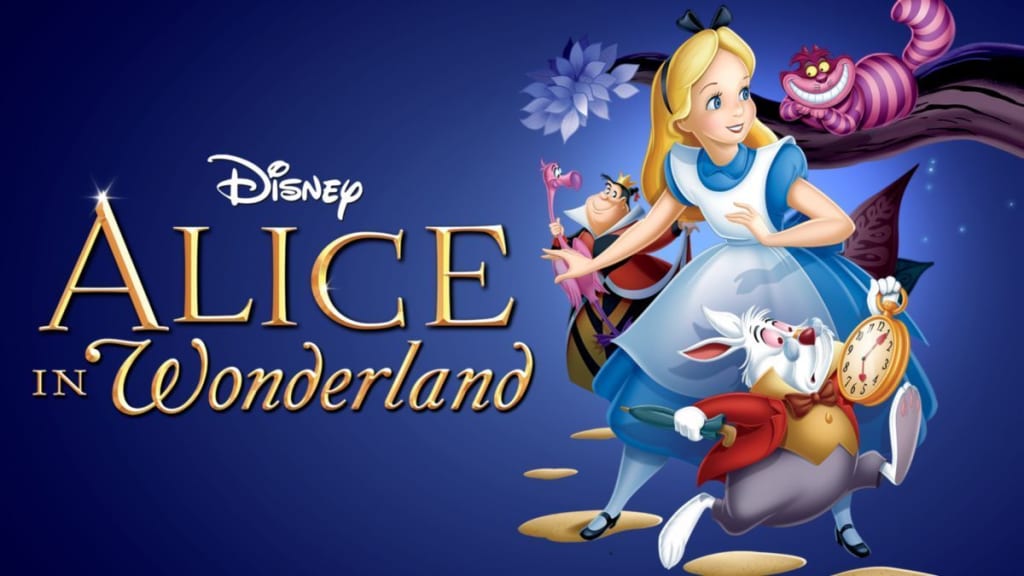Alice In Wonderland
"How the story is associated with mental health"

"I wonder if I've been changed in the night? Let me think, was I the same when I got up this morning? I almost think I can remember feeling a little different. But if I am not the same, the next question is, "Who am I?" Ah, that's the great puzzle!" ~Alice~
Children's animated entertainment plays an understated yet important role in stigmatizing mental health issues in the younger generation. Animated characters have always been appealing to children because it stimulates their minds into a world of imagination. This makes them an ideal platform for introducing children to the conversation of mental health., since they absorb more of what the characters are saying, rather than what they look like.
For example, Alice in Wonderland by Lewis Carroll, a majority of the characters present symptoms of various psychological disorders in some form or another, without mentioning mental health in any type of way. Alice exhibits symptoms of personality disorder. "Who are you?" said the caterpillar. Alice replied, rather shyly, "I-I hardly know, sir, just at present-at least I know who I WAS when I got up this morning, but I think I must have been changed several times since then."
The White Rabbit's obsession about promptness, and his fears and paranoia with time, correlates with a stress related disorder known as generalized anxiety disorder. "I'm late, I'm late for a very important date. No time to say hello, goodbye, I'm late, I'm late, I'm late"
The Cheshire Cat displays schizophrenia, as he disappears and reappears distorting reality around him and subsequently driving the other characters in the story to madness. "But I don't want to go among mad people," Alice remarked. "Oh, you can't help that," said the cat, "or you wouldn't have come here."
The Caterpillar speaks in riddles in a slow prophet like manner, smoking his hookah as if he was Alice’s superior. This is a condition called grandiose delusions. Grandiose delusion is a false or unusual belief about one’s greatness. “How doth the little crocodile, Improve his shining tail. And pour the waters of the Nile, On every golden scale. How cheerfully he seems to grin, How neatly spreads his claws, And welcomes little fishes in, With gently smiling jaws!.”
The mad hatter, simply by madness, repeating in an obsessive-compulsive way. for ten years at 6 p.m the celebration of his beloved Unbirthday. But he stuck there...no sense of time, while he is getting older. "Have I gone mad?, asked the mad hatter. "I'm afraid so. You're entirely bonkers. But I'll tell you a secret. All the best people are," said Alice.
Another character that clearly displays traits of a mental illness is the Queen of Hearts. Known for the catch phrase, “Off with their heads!”, the Queen is constantly angry and yells at everyone around her without pause. If anyone disagrees with her, insults her, or makes her unhappy in any way, she orders to have them beheaded without a second thought. The Queen displays many traits of narcissistic personality disorder, is a disorder where individuals feel their own importance, a deep need for excessive attention, and a lack of empathy for others. They are also often impatient or angry when they do not receive “special treatment,” and they often display “rage or contempt” for others in an attempt to appear superior
Although, media does play a role in stigmatization of psychological disorders, the key examples, which I only named a few in this story, show how children's animated entertainment has the potential to facilitate conversations to better understand the complexities of mental health at a young age.
About the Creator
Melissa Deutsch
I am a mental health advocate.I am the founder of "Nature Monkeys" it is a unique way to raise awareness to both children and their parents in a fun and creative way. I write children's stories and articles for my local magazine.






Comments
There are no comments for this story
Be the first to respond and start the conversation.